

Damion Smy
Boxy new KGM Musso unveiled to take on HiLux and Ranger ahead of Australian launch
8 Hours Ago
Forget the fact the M5 CS only gets 7kW more power than the regular M5 Competition. It’s totally and utterly irrelevant, because you can’t quantify this car by numbers alone.
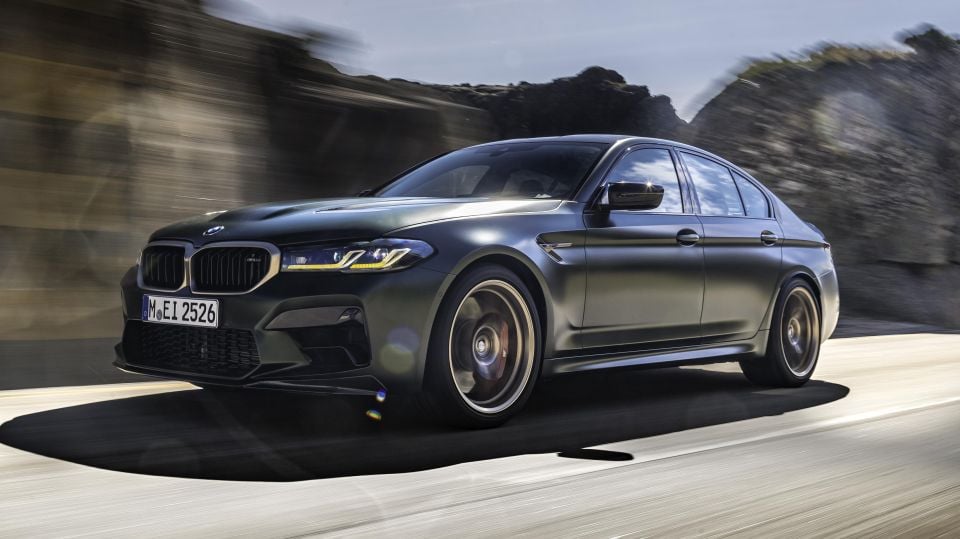
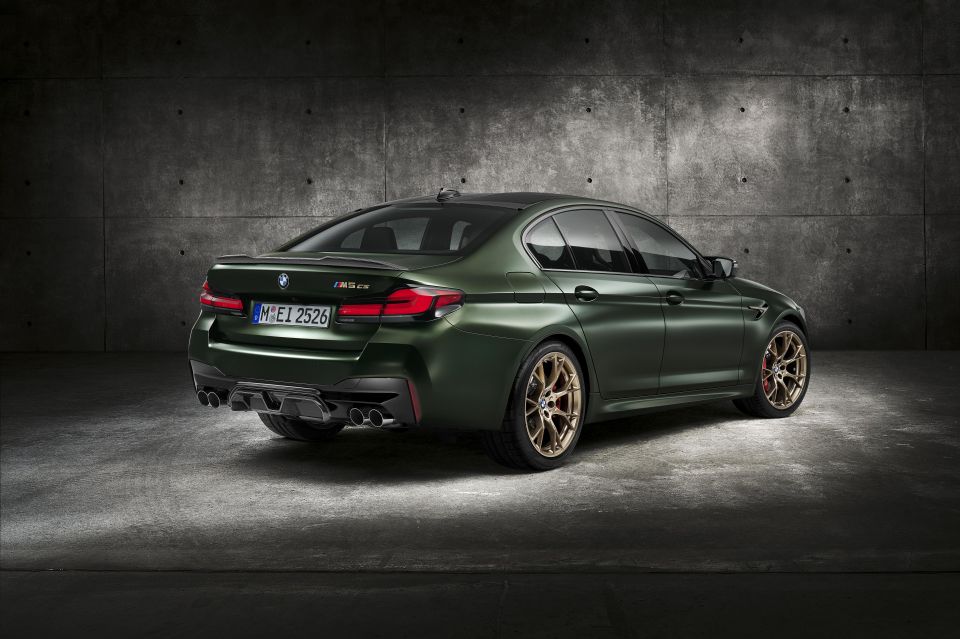

Quickly see how this car stacks up against its competition. Select any benchmark to see more details.
Where expert car reviews meet expert car buying – CarExpert gives you trusted advice, personalised service and real savings on your next new car.
It’s 8pm in Germany and I’ve just pulled into the fast lane in a derestricted zone on the autobahn. The speedo is showing 257km/h as I rein in a black RS6 in the most powerful car in the history of BMW M (for now), the M5 CS.
Funny thing is, I’m not really pushing the M5, as there’s more throttle travel remaining under my right foot. This is proper all-wheel drive tactical weaponry cloaked in a four-door sedan body capable of demolishing supercars, and not just on the autobahn.
The M5 has always been a revered M car with herculean power, unrivalled sleeper status, and enough outright pace to blitz all but the world’s fastest production cars.

But, the M5 CS is a different kind of monster. It elevates the exclusivity and all-round performance to jet fighter status. It’s on a different level to the M5 Competition, one that feels closer to an overgrown GT3 racer than other specialised versions of M cars these days.
Forget about the top-line figures here, although they are impressive by any measure. Its twin-turbo 4.4-litre V8 pumps out 467kW of power and 750Nm of torque, but that’s only 7kW more than that of the M5 Competition. Focusing on that alone would be an injustice to the carefully-honed engineering gains achieved with the M5 CS, though.
What’s far more compelling are the 70kg the engineers have managed to slash compared with the Competition – not an easy thing to do these days, with increasing safety requirements and all-wheel drive both playing a role.
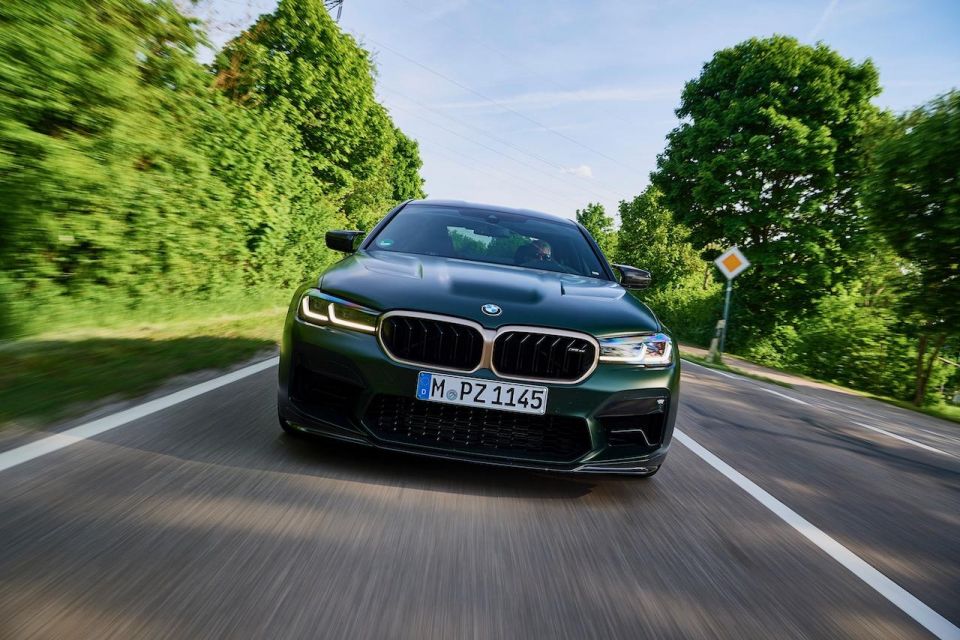
It delivers a connection between car and driver you feel from the moment you start slicing and dicing German b-roads or hunker down on the autobahn, low-flying at warp speed.
Mind, it does seem a bit implausible to be talking about lightweight measures in a four-door sedan that tips the scales at 1825kg. To put that into perspective, you’ve got to look at the heft of its big-hitting rivals.
Audi’s all-wheel drive hot-rod is the RS6 Avant, which weighs in at a tank-like 2265kg, while the RS7 is 2140kg. The Mercedes-AMG E63 S is a relatively light-weight 2095kg in comparison, with the Porsche Panamera GTS even less at 2040kg. None come close to the M5 CS in that regard.
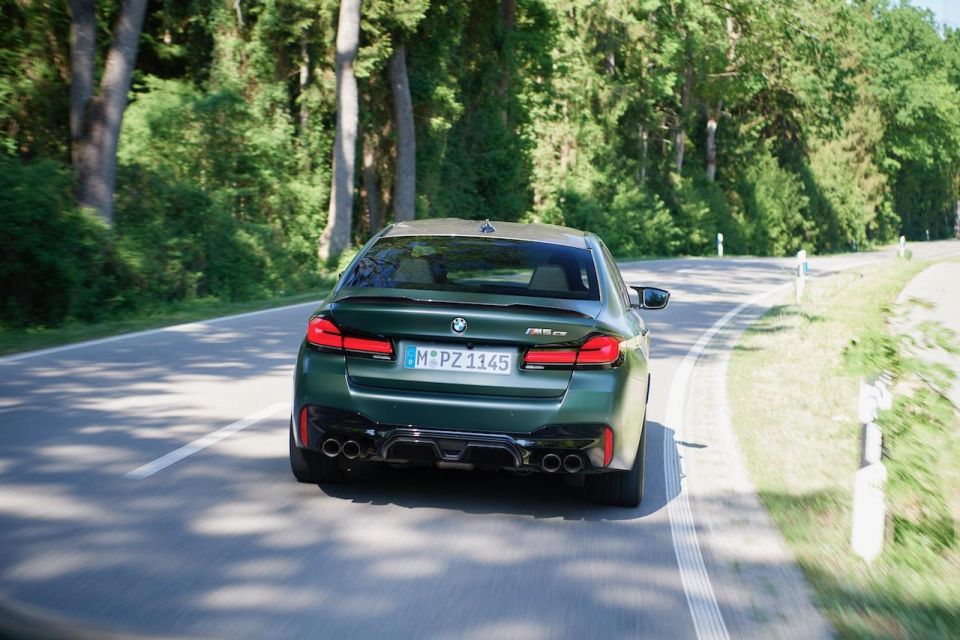
The lightweight measures deployed on the M5 CS are substantial and all-encompassing, with carbon-fibre used for the roof and bonnet, the latter made obvious from the exposed air vents sitting either side of the bonnet bulge. It’s a perfect contrast to the Frozen Deep Green Metallic paint on our Munich-based tester.
More of the featherweight material has been used for the front splitter, door mirror caps, rear spoiler, and rear diffuser. In all a bit subtle in true sleeper fashion, at least compared with the GT3-look yellow headlights and the various accents that adorning the kidney grille frame, side gills, and badging.
What really sets this car off are the superb-looking 20-inch forged Gold-Bronze wheels, which clearly expose the gold-painted six-piston brake calipers (you can have red) as part of the standard-fit, carbon-ceramic brakes.
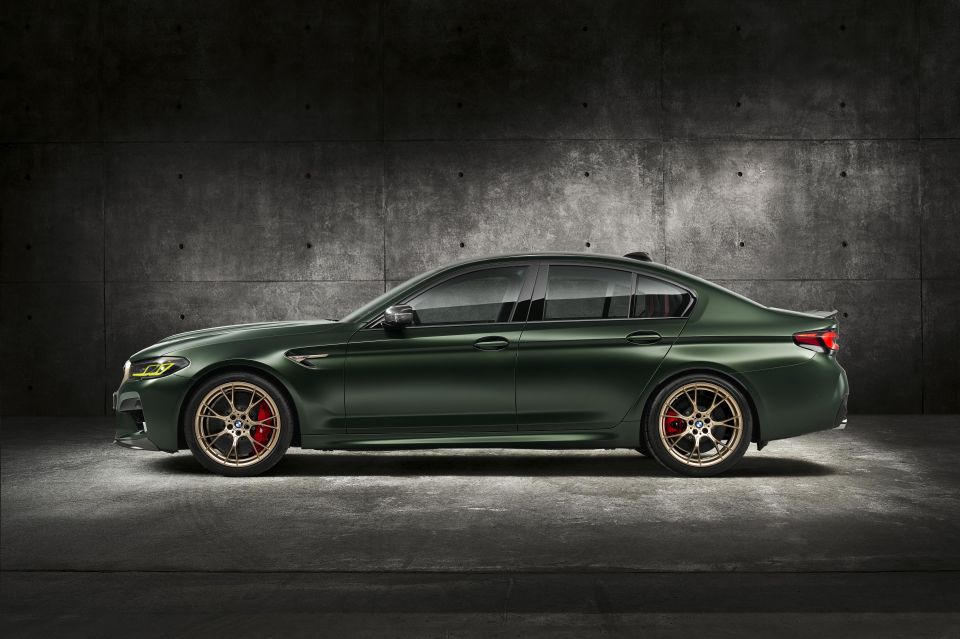
Those stoppers are also a key part of the M5 CS’s weight reduction program, shaving a further 23kg off the unsprung weight of those on the M5 Competition, not to mention the phenomenal stopping power they bring.
However, weight saving measures are only one part of the M5 CS formula. It’s under the skin where you’ll find the real magic at work here. Bespoke chassis tuning is what separates this car from the regular M5 Competition more than anything else.
The wizards in Garching – where you’ll find M HQ – set about and retuned the springs, suspension, and anti-roll bars for a level of tarmac-crushing accuracy you won’t believe possible (we’ll get to the driving impressions soon enough).

Ride height was dropped by 7mm, compared with the M5 Competition, while the chassis specialists retuned the bearing springs on the front and rear axles for improved stability when you’re giving it a proper nudge.
You might be wondering why we’ve only just got access to the M5 CS in Germany, nearly a year after it touched down here.
That’s because BMW Australia could only get just 20 cars in total, and they sold out in an astonishing 56 hours. The press-fleet missed out entirely.
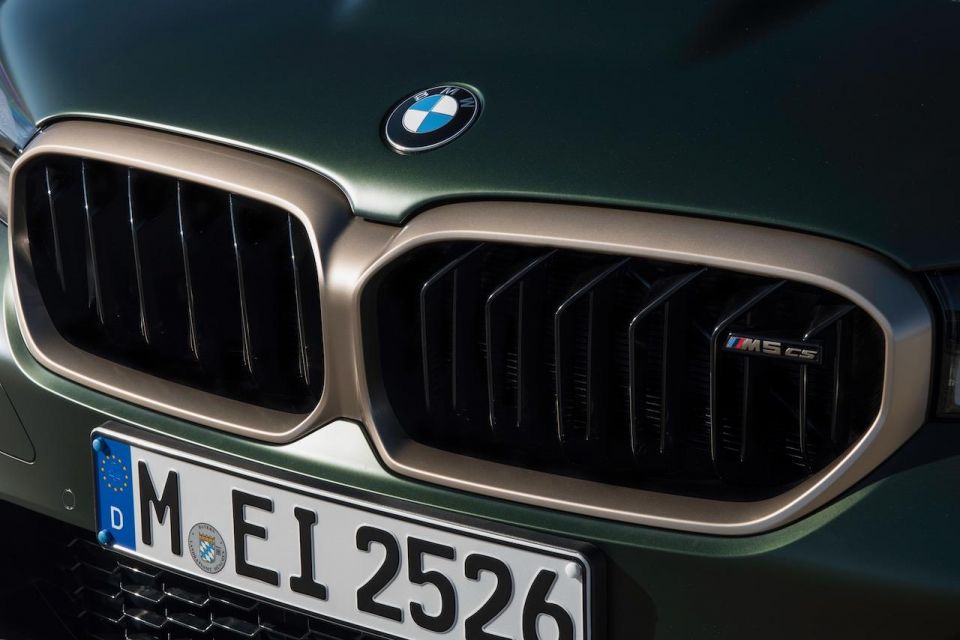
BMW Australia priced the M5 CS at $274,900 ($300,900 drive-away) for its allocation of 20 cars in 2021, a $30,000 premium on the regular M5 Competition ($244,900 excluding on-road costs).
The competitive set for the M5 CS includes the Audi RS7 priced from $237,000, the Audi RS6 Avant priced at $227,700, Mercedes-AMG E63 S at $258,800, and the Porsche Panamera GTS priced from $312,900.
It’s worth noting anyone who wants a CS now will need deeper pockets. Only one is listed locally, with a sticker price of $500,000 before on-roads. Ouch.
All prices are excluding on-road costs except where indicated.
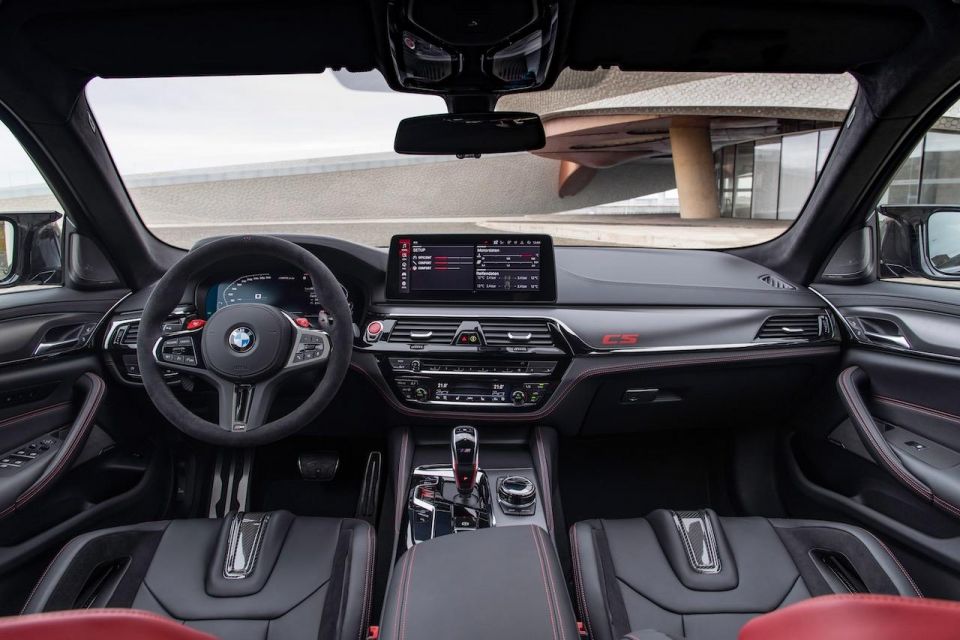
Buy your new car without the stress. It's fast, simple and completely free.

Great service from Travis and team, second time I have used this business would not hesitate to recommend them to anyone
Craig C.
Purchased a Ford Ranger in Sunshine Coast, QLD
CarExpert helped Craig save thousands on his Ford Ranger, now let us save you on your next new car.
Find a dealIf the Frozen Deep Green Metallic paint doesn’t signify the rarity of this truly special machine, you’ll be in no doubt from the moment you climb aboard and wrap yourself in the most exquisite sports seats yet.
These full-carbon buckets are borrowed from the M3 and M4 Competition options list, only those in the M5 CS are upholstered in combination leather/Alcantara with red accents and stitching.
The side bolsters on the seat base are huge, which increases the degree of difficulty for fast exits by a factor of 10. Luckily, there are grab handles built in to each side for leverage as you raise yourself out of them, much like a tricep dip.
Part of the charm of the M5 CS is opening the rear doors to find a pair of similar racing bucket inserts (there’s only room for two back there), complete with aggressive bolsters and the same imprint of the Nürburgring on the headrests.
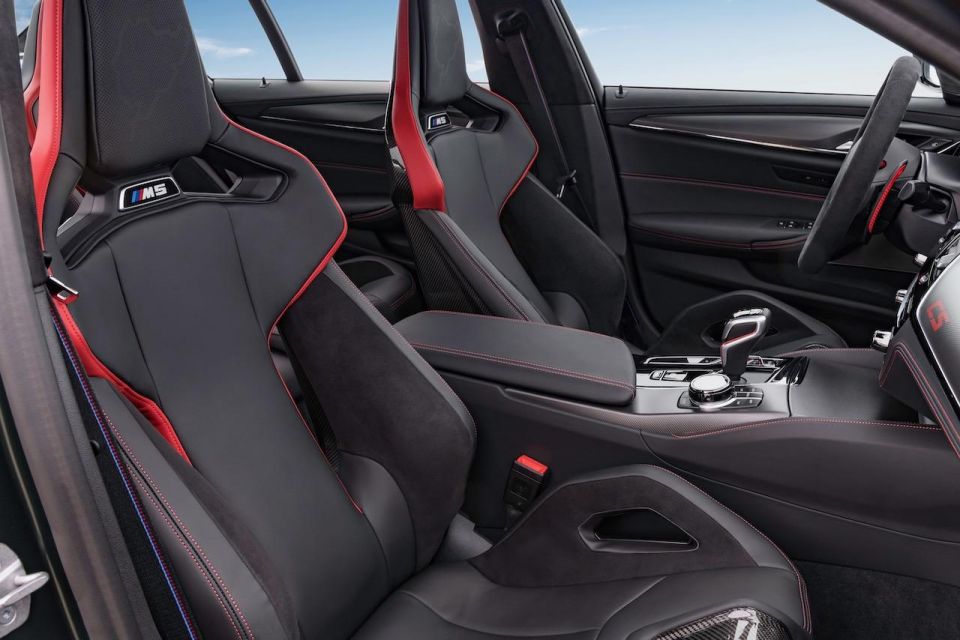
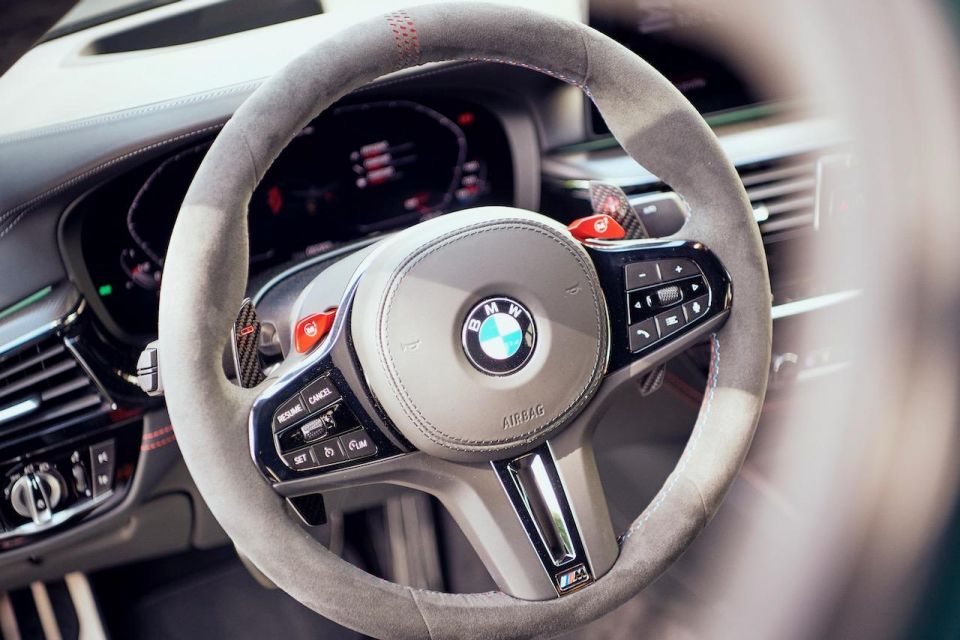
It’s a lot more bling than we’re used to seeing in an M5. If I’m honest, I’d prefer to swap the red bits for the same Frozen Deep Green Metallic as the exterior, or even the colour of the wheels. Red is a bit loud for my taste.
You won’t find any cheap plastics here, just swathes of Alcantara, fine Merino leather, black chrome, and carbon fibre accents.
Thankfully, there’s no BMW GT3-style yoke in front of the driver. Instead, there’s a round Alcantara-wrapped steering wheel complete with mandatory M buttons and elongated carbon paddle shifters for easy reach.
There’s not a lot of space for odds and ends up front given the absence of a centre-console bin, which has been replaced by a fixed Alcantara armrest in the interests of weight saving, apparently. You’ll find yourself using the relatively generous door bins or glovebox instead.

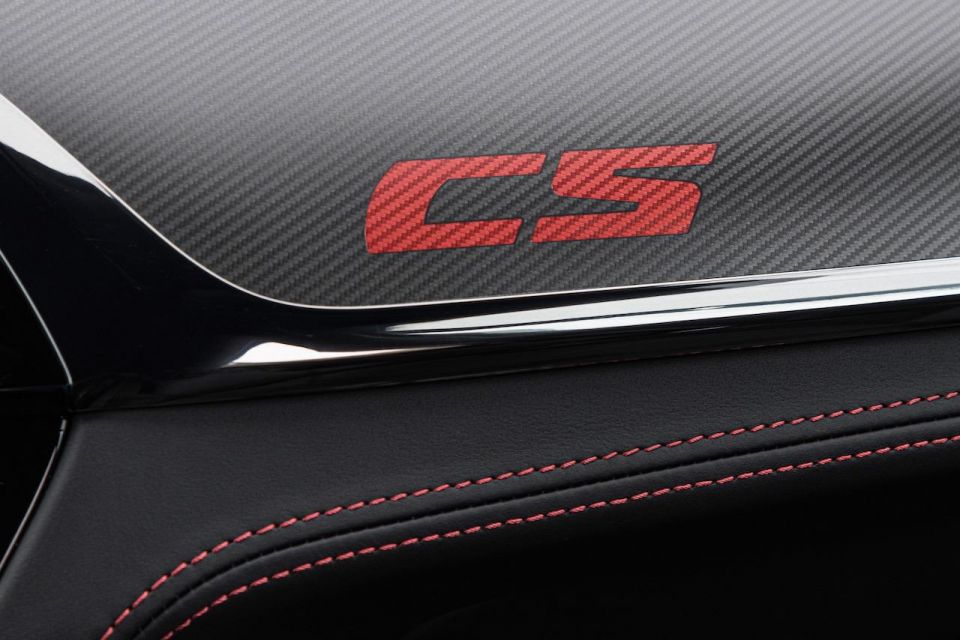
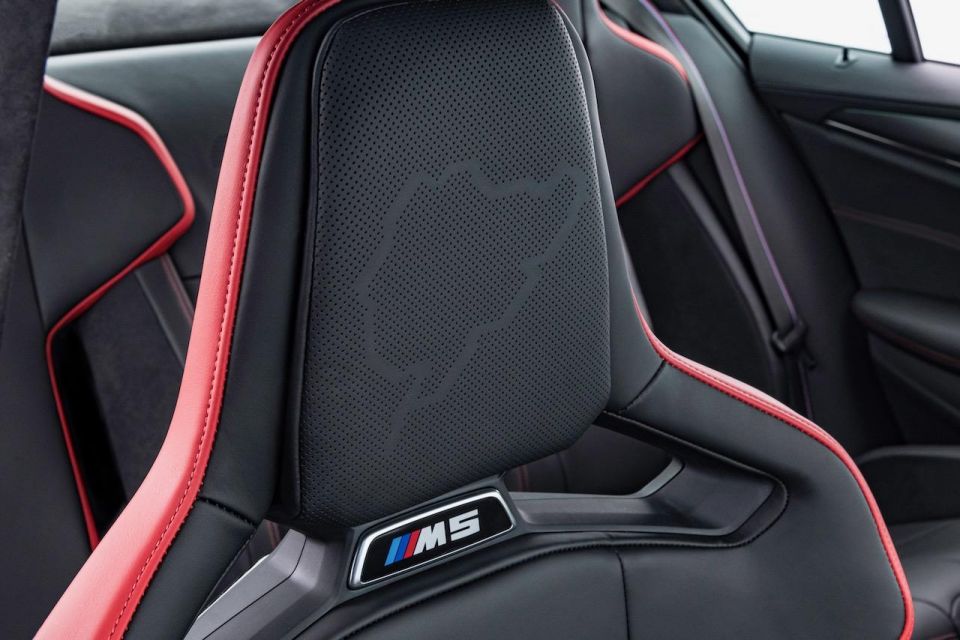
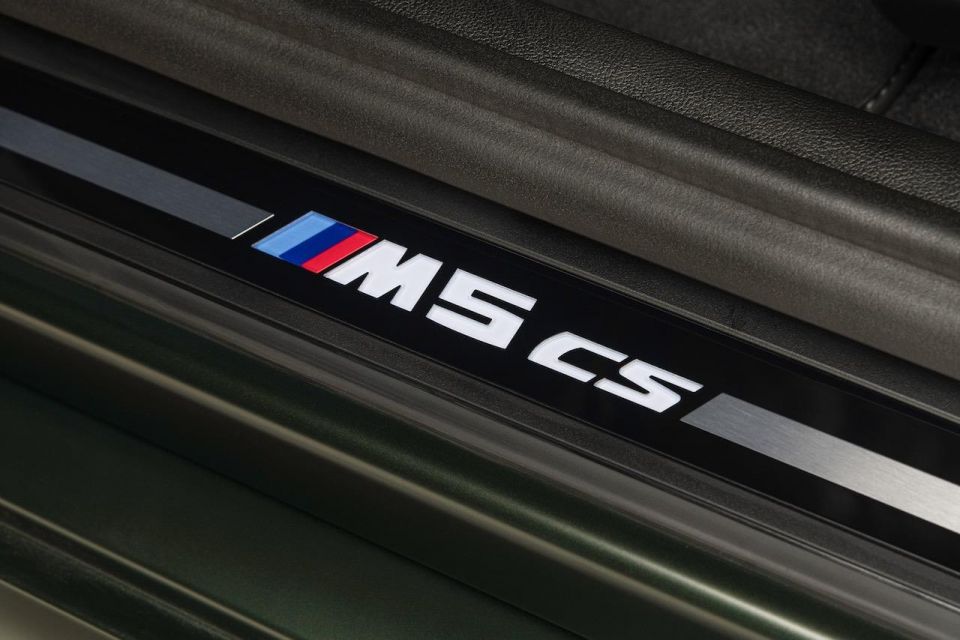
There’s the usual full-size digital instrument display that’s configurable depending on the drive mode selected, but it’s behind the eight-ball compared to the latest dual-screen setups you find in Benz, Audi, and Porsche competitors as far as clarity and colour goes.
The 12.3-inch infotainment touchscreen is better and can also be accessed using the rotary iDrive controller when on the move, though again it lacks the variety of colours seen in rivals models.
Rear legroom is decent rather than generous thanks to the front buckets that eat into legroom, and there’s no rear-seat armrest. I don’t imagine passengers spending a whole lot of time back there, but at least there’s rear air vents and individual climate control.
That said, boot space is a golf-club-swallowing 530 litres.
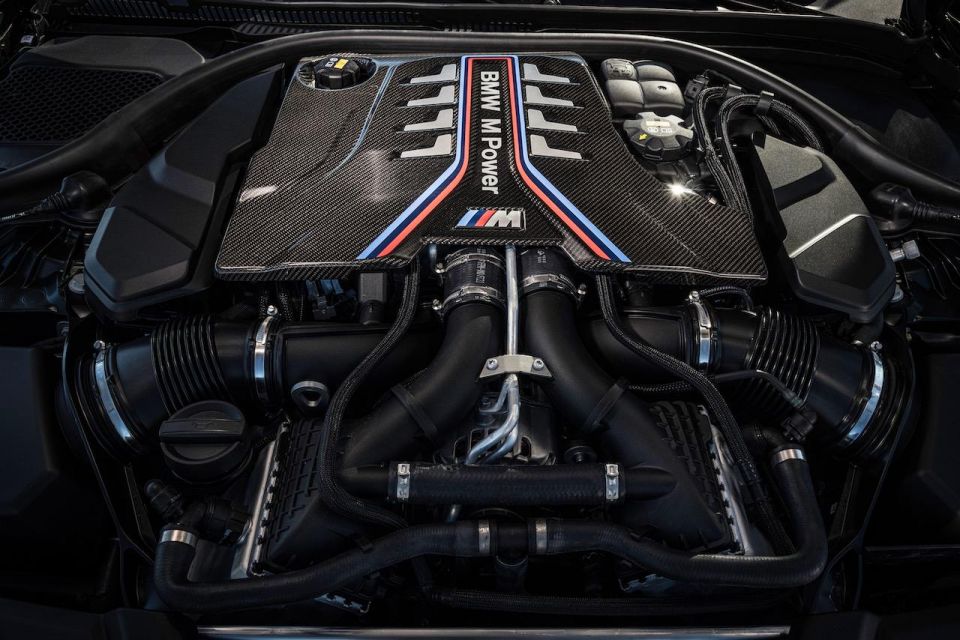
Making 467kW of power at 6000rpm and 750Nm from 1800-5950rpm from its 4.4-litre twin-turbo V8, the M5 CS is the most powerful production car in the history of BMW M… for now.
While it has only 7kW more than the M5 Competition, which also gets the same 750Nm torque, peak shove is maintained for 90rpm longer.
I know what you’re thinking. It makes the Competition seem like great value against the CS – and it is for sure. But there’s a whole lot more to the character of the CS and how it responds to inputs, which we’ll get to shortly.
The M5 CS will rocket from 0-100km/h in a claimed 3.0 seconds, and while we didn’t get the chance to run the numbers on it, that figure feels about right. In doing it, the CS shaves 0.3 seconds off the M5 Competition.
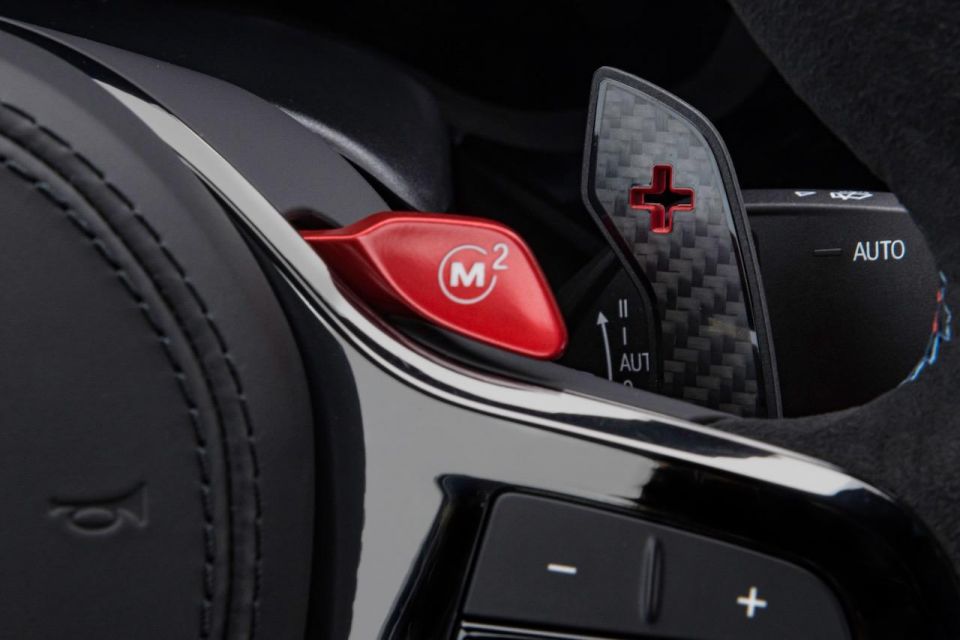
Push on, and the M5 CS will reach 200km/h in 10.4 seconds, or 0.4 seconds less than the Competition, while top speed is electronically limited to 305km/h.
Fuel tank capacity is 68 litres, while fuel consumption is a claimed 10.6L/100km on the combined cycle using premium 98 RON.
Rivals include the Audi RS7, which also uses a twin-turbo V8 making 441kW and 800Nm, and goes from 0-100km/h in 3.6 seconds. Its RS6 Avant stablemate uses the same powertrain and claims identical performance.
The Mercedes-AMG E63S also employs a 4.0-litre twin-turbo engine producing 450kW and 850Nm for a 0-100km/h time of 3.4 seconds, while the Porsche Panamera GTS gets the same 4.0-litre twin-turbo displacement making a modest 353kW and 620Nm. It claims a 0-100km/h sprint time of 3.9 seconds.

The idea of driving the most powerful M car in its 50-year history to the max on the Mecca of speed that is the German autobahn is akin to the Holy Grail in this business.
Opportunities like this are rare, even after 20 years of testing all kinds of stuff. Initially, you drive out of M Town in Garching, Munich, with a little bit of anxiety.
It’s a very expensive bit of hardware and there’s only one or two on the press fleet, even here at HQ in Germany. In other words, you don’t want to, erm, mess it up.
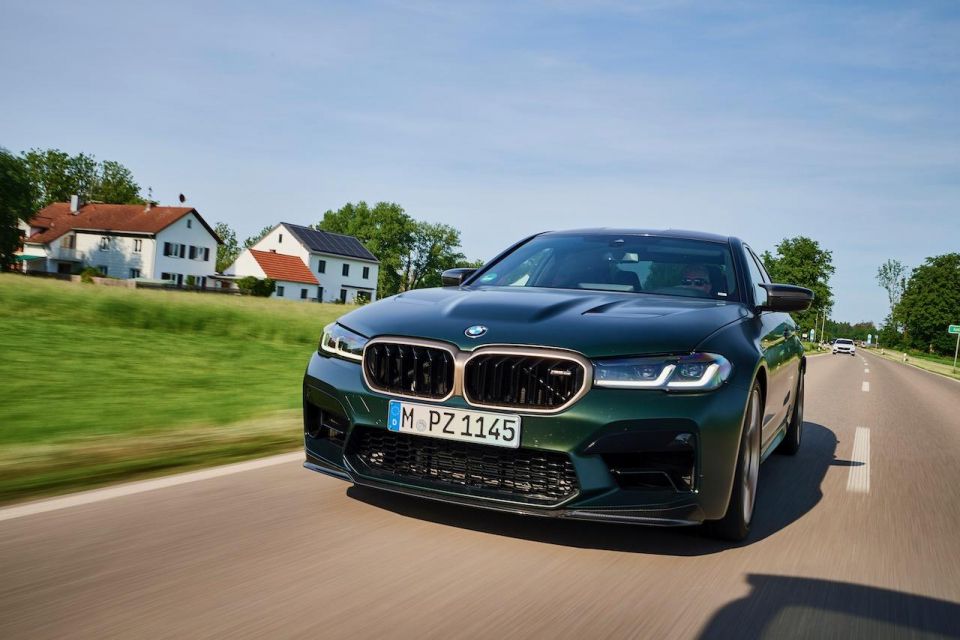
Where expert car reviews meet expert car buying – CarExpert gives you trusted advice, personalised service and real savings on your next new car.
You tend to start off in Comfort, just to get into the swing of things, but the M5 CS is a bit too quiet in that mode, so Sport becomes the default if you want to properly hear the V8.
It’s a dual-branch, flap-controlled sports exhaust system that sounds properly motorsport-derived producing a sharper, more aggressive sound than the regular M5. It’s louder again in Sport+ but the excited nature of the drivetrain in this mode makes it difficult to enjoy in the city. Then again we did it anyway just for the extra dose of decibels it delivers.
I’m not yet on the autobahn, but already enjoying the fact I’m behind the wheel in one of the quickest and most focused sedans ever built. The carbon seats are incredible. Not just for the vice-like grip and support they give but for the back relief and comfort they provide/
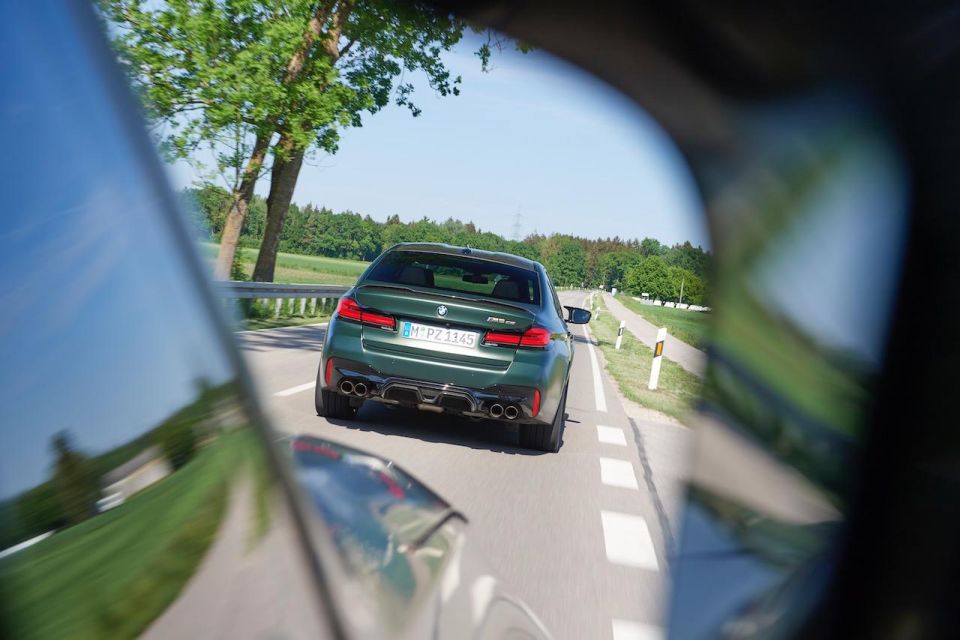
You just need to get used to the divider that pops up smack-bang in the middle of the seat. There’s nothing sensual about it, by the way.
Just a few tight moves and a couple of u-turns as we navigate out of Munich proper, and the car already feels more reactive to inputs.
The M5 CS is just shy of five-metres long and tips the scales at 1825kg, so it’s anything but a lightweight, but it feels deliciously nimble at the front end.
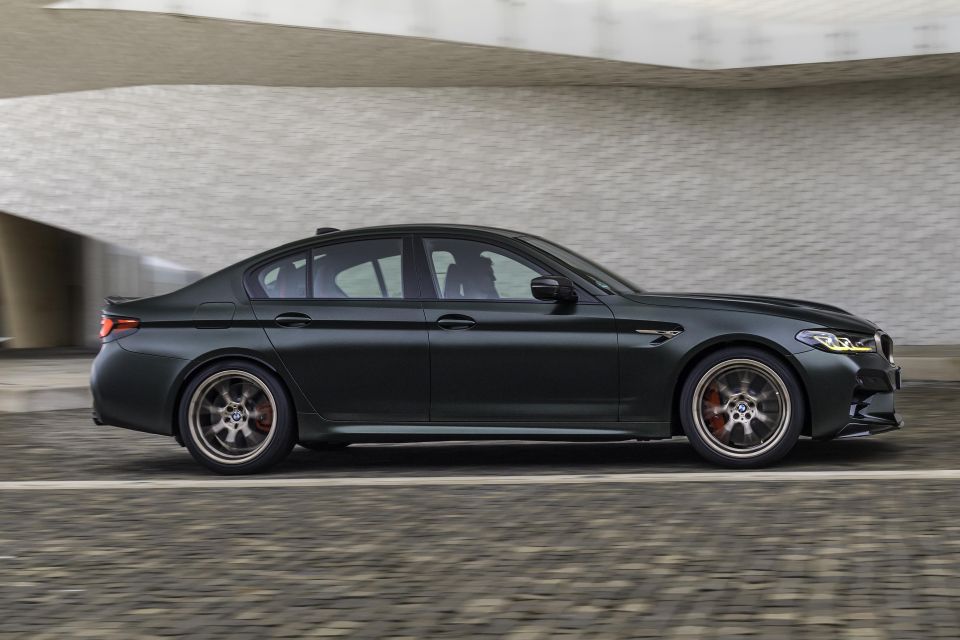
While the eight-speed automatic makes light work of the stop-start crawl with an effortless degree of refinement, I still think a quick-shifting dual-clutch transmission is more in keeping with the character of this car.
I use the time to test out the harman/kardon sound system. It’s very good, with crystal-clear clarity on the highs and lows – but even though we’re barely moving, I can’t get enough of the deep, tank-like rumble of the V8 whenever I nudge forward.
Never mind that as we merge onto the autobahn heading north out of Munich to some uncrowded B-roads for some video tracking work. To make things easier, I’ve hit the red M2 button on the all-Alcantara steering wheel.
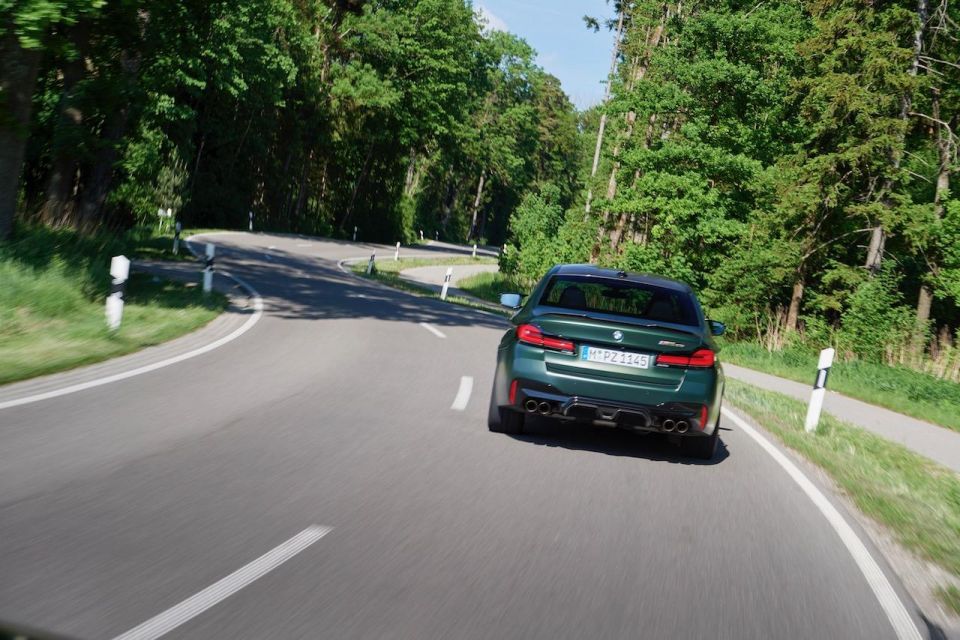
All the settings have been dialled up (pre-configured) all the way up to the warp-speed settings – that’s Sport + for the chassis and engine, and Track that switches off the centre screen for total driver focus.
I’m at full beans for a run in the fast lane in a bid to round up the black RS6 that’s just whizzed by. At 257km/h I’m on his tail in no time, so I downshift and apply two-thirds throttle. Honestly, it felt like the M5 CS was just warming up with so much power yet to unleash.
Unfortunately, derestricted zones are short-lived in these parts, otherwise we would have easily hit the limiter. Not only does the throttle response more immediate, the whole car feels more engaging than an M5 Competition.
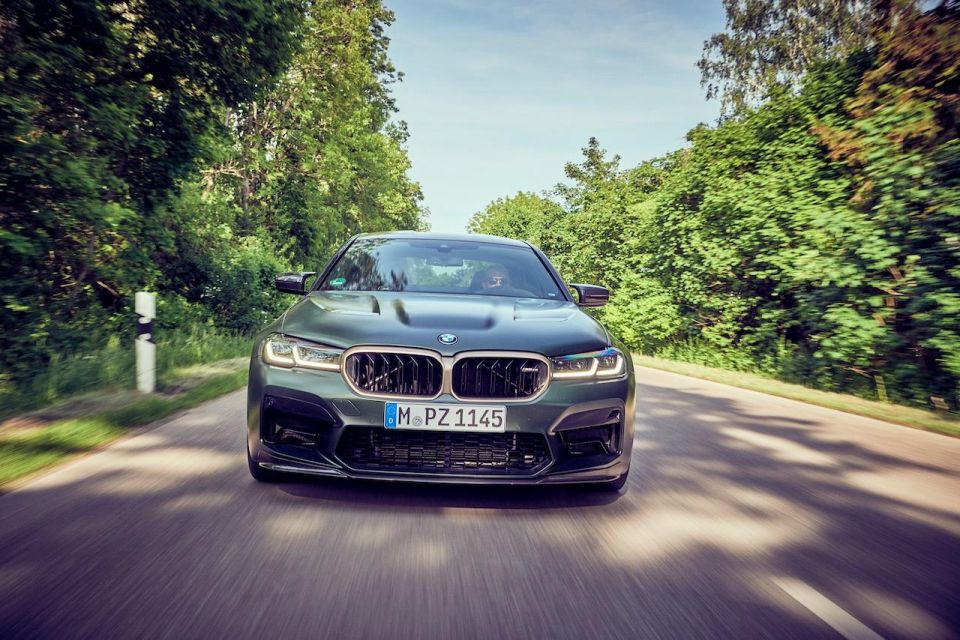
All the mechanicals feel sharper and the steering weight and ratio is stunning. It makes the high speeds on the autobahn seem routine just by the confidence you have in the steering.
At this point I’m in two minds about the torque converter transmission in the M5 CS. The shifts are rapid, no question, and it’s smooth, but it’s missing the crispness of a dual-clutch box on the upshifts, in particular. It’s perfectly fine rapid-fire auto-blipping in either of the Sport modes, so there’s no real need to start pulling paddles during the high-speed runs.
Different story when you get off the autobahn and onto the tight and twisty roads in the forests, where you’ll be pulling paddles instinctively. It’s also where you can experience the greatest separation between the M5 Competition and the CS.
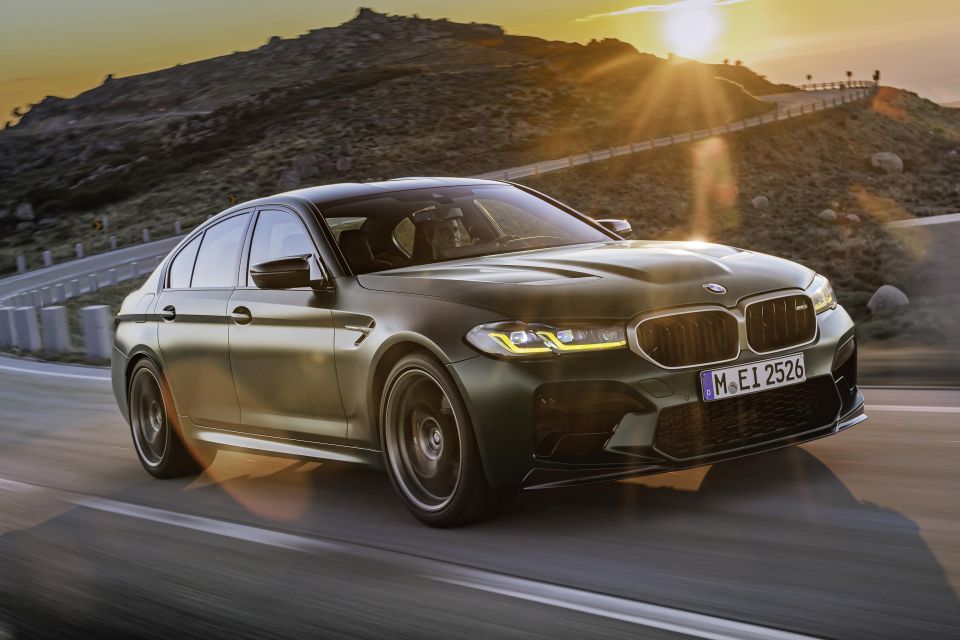
The chassis feels more alive, more connected to all the major controls – whether it’s throttle response, steering or body control, all of them feel incrementally sharper.
I know 70kg doesn’t seem like much in the grand scheme of things, given we’re still trying to hustle around an 1825kg machine, but you can feel it from the moment you really start pushing in the narrow twisty sections. The M5 CS can be driven as you would an exotic GT car.
Shod with Pirelli P-Zero Corsa 275/35 tyres up front and 285/35 rubber down back, the footprint isn’t all that massive, but with all-wheel drive and its finely-tuned chassis, high-load grip is astonishing.
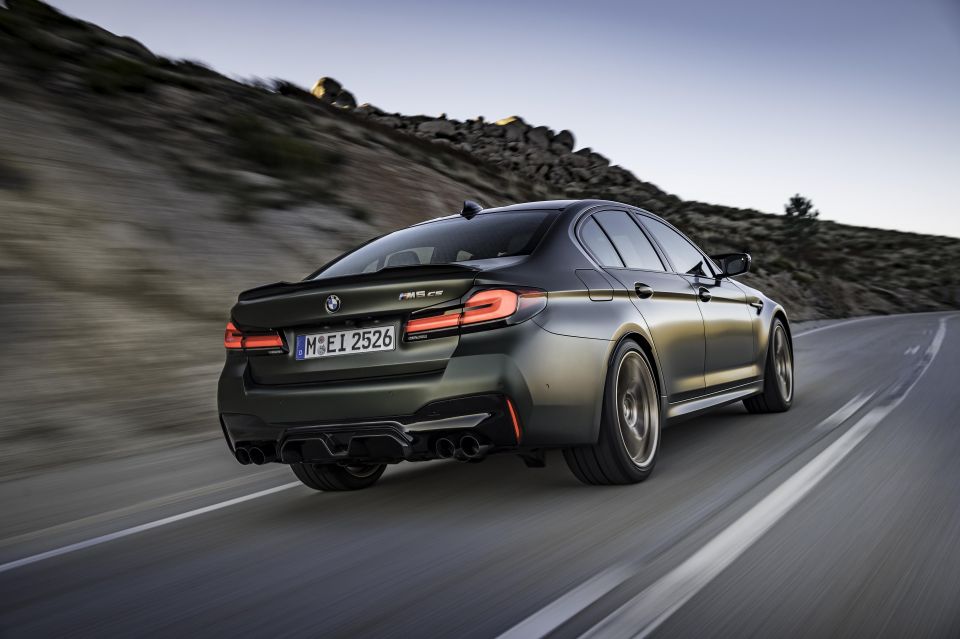
There’s no discernible body roll, even with the most aggressive steering inputs. You can genuinely chuck this monster sedan around as you would a well-honed sports car or hot hatch.
Again, it’s the steering feel and pin-point accuracy that stand out here. You can place the car at the precise apex in a corner and get on the loud pedal earlier than you’re probably used to and there’s no traction loss, it just fires out of there ready for the next turn. Brilliant. Uncanny, even.
Then there’s the industrial-strength stopping power from the standard-fit lightweight carbon ceramic brakes. It’s not just the fact they’ll pull the M5 up in the shortest possible distances from obscene speeds, it more the linear feel to the pedal that will have you applauding. They behave more like steel rotors in this regard.

The transition from Comfort to Sport is virtually instantaneous with regards to damper stiffness and ride compliance but it’s a bit hard to give you a definitive appraisal of the M5’s overall suspension performance over and above body control due to the impeccable road surfaces in Germany.
Only the odd rough edge in the forest areas were available to test the M5’s bump-absorbing ability and they were dispensed without so much as a ripple, but that’s about the extent of it.
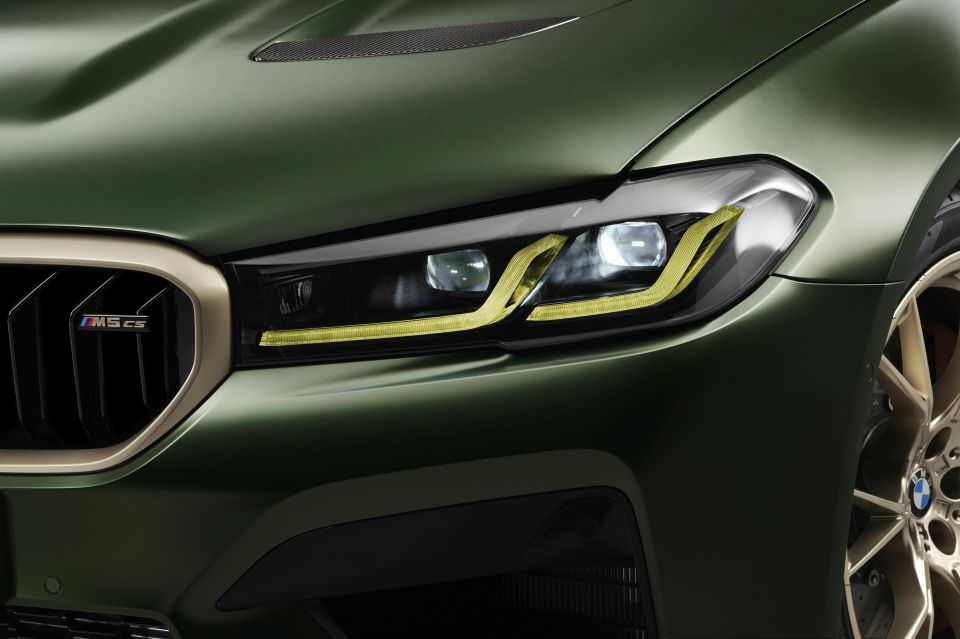
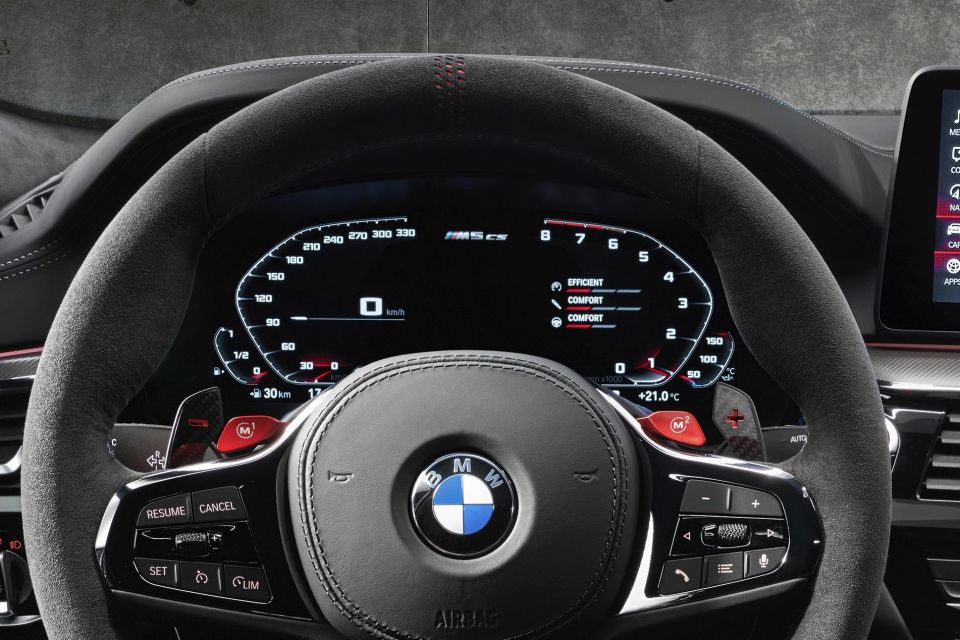
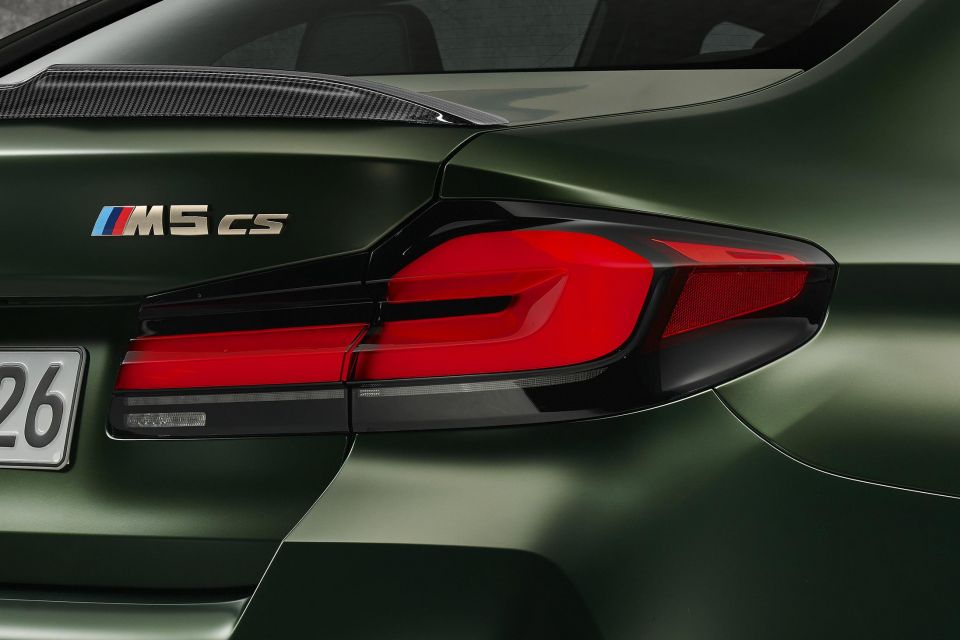
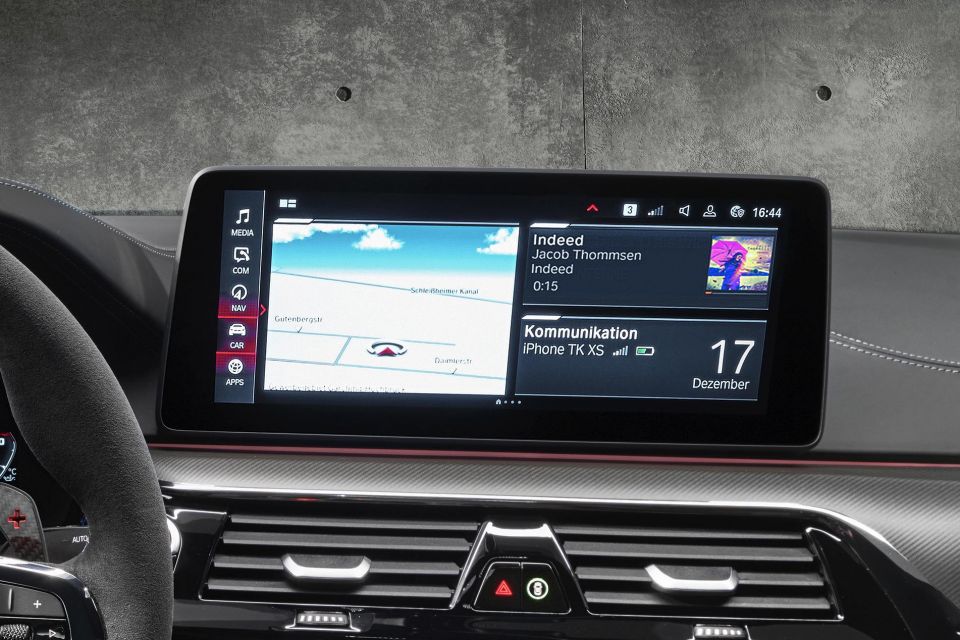
Even the entry-level BMW 520i comes well-equipped from a kit standpoint, with each step up in the 5 Series line-up adding another bundle of equipment to what is an exceedingly generous list of equipment.
Standard equipment in the range-topping M5 CS is therefore comprehensive to say the least and includes the following highlights:

The current BMW 5 Series wears a five-star ANCAP safety rating based on tests conducted by sister firm Euro NCAP.
Scores include 91 per cent for adult occupant protection, 85 per cent for child occupants, 81 per cent for pedestrians and 59 per cent for safety assist.
All versions of the new 5 Series in Australia feature the Driving Assistant Professional package as standard, including:

The 5 Series range is covered by BMW Service Inclusive service packages.
The Basic package is included at no charge and covers up to five years or 80,000km for standard service items like annual vehicle checks, oil changes, all filters, spark plugs and labour costs.
Like the wider BMW range, the 5 Series is covered by a three-year, unlimited-kilometre warranty, while its main rivals offer five years.
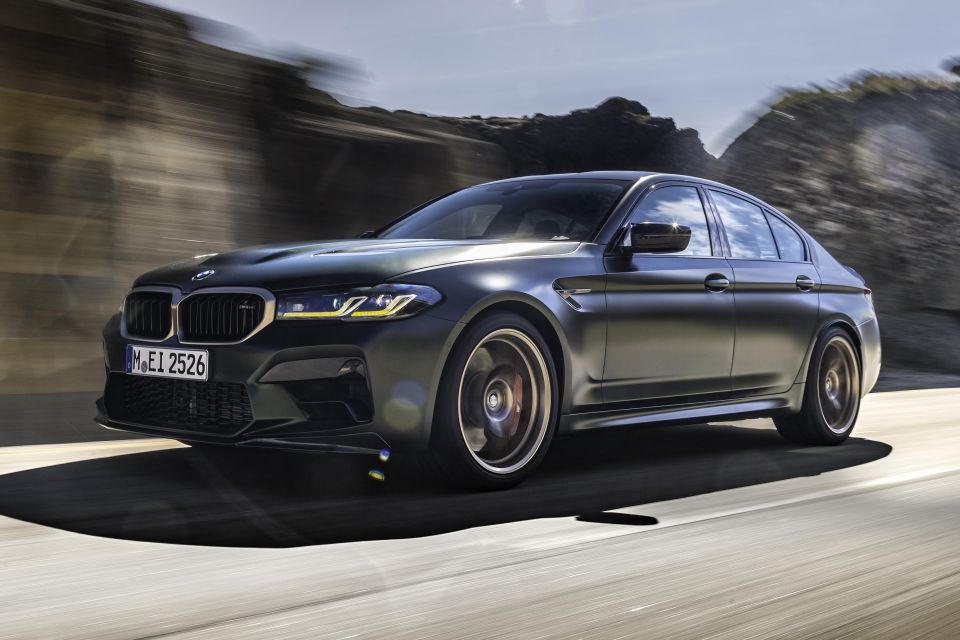
Forget about the fact the M5 CS only gets 7kW more power than the regular M5 Competition.
It’s totally and utterly irrelevant, because you can’t quantify this car by numbers.
It is, quite simply, the best all-round sports sedan I’ve ever driven, even though it’s difficult to call out any one aspect of the car that stands out more than any other.
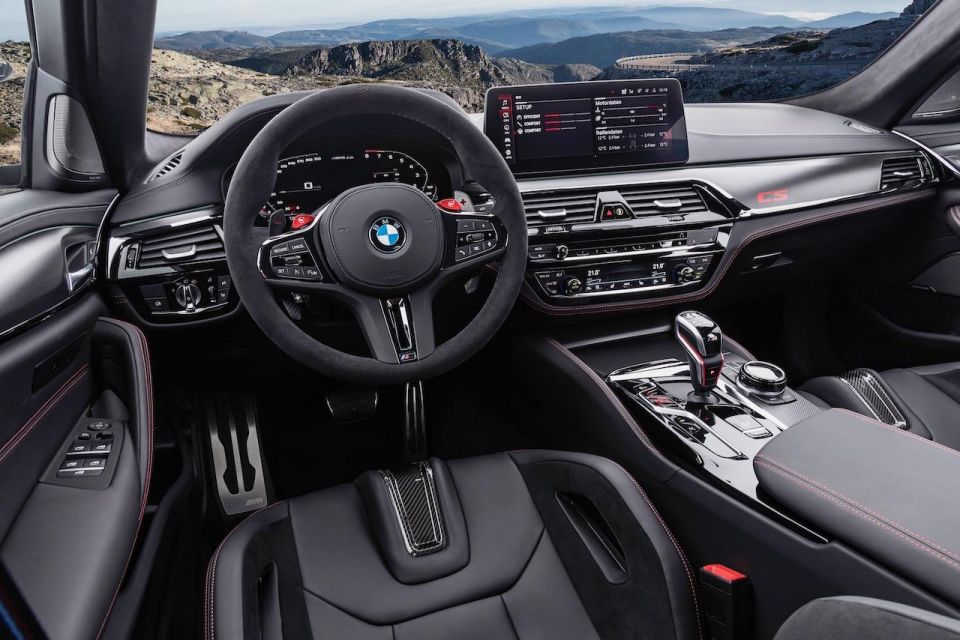
The magic starts from the moment you sink in to the carbon seats and hit the start button, and you relish in the audible expression of power. It just gets better with every turn you make on a b-road and every kilometre you devour on the autobahn.
A car of these proportions and this heft shouldn’t feel the way it does behind the wheel. It’s the linearity of the all the major mechanicals and the feeling you’re driving a lightweight machine on the edge that inspires endless confidence.
Best of all and despite the Frozen Deep Green Metallic paint and Gold Bronze wheels it’s still an M5, and one that boasts genuine sleeper status.
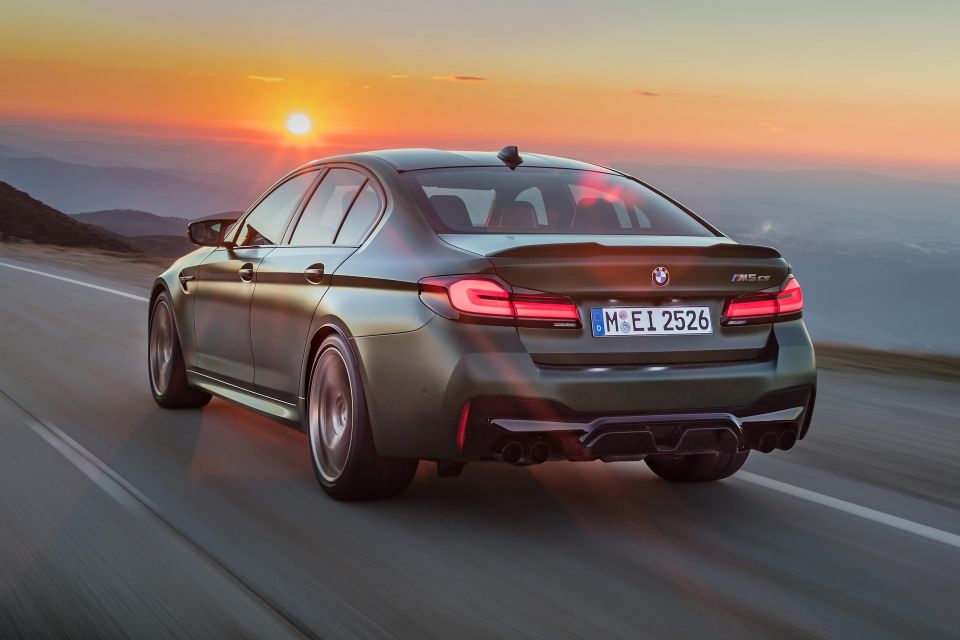
Click on an image to view the full gallery.
MORE: Everything BMW M5
Where expert car reviews meet expert car buying – CarExpert gives you trusted advice, personalised service and real savings on your next new car.
Anthony Crawford is a CarExpert co-founder and senior presenter with 20+years in automotive journalism and content creation.


Damion Smy
8 Hours Ago


Damion Smy
9 Hours Ago


Damion Smy
11 Hours Ago


Damion Smy
12 Hours Ago


Damion Smy
14 Hours Ago


Damion Smy
15 Hours Ago